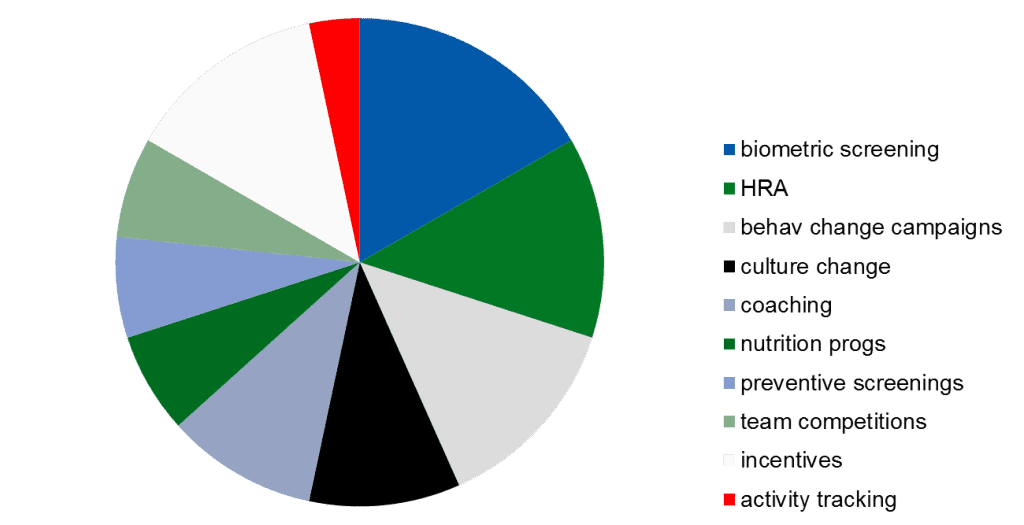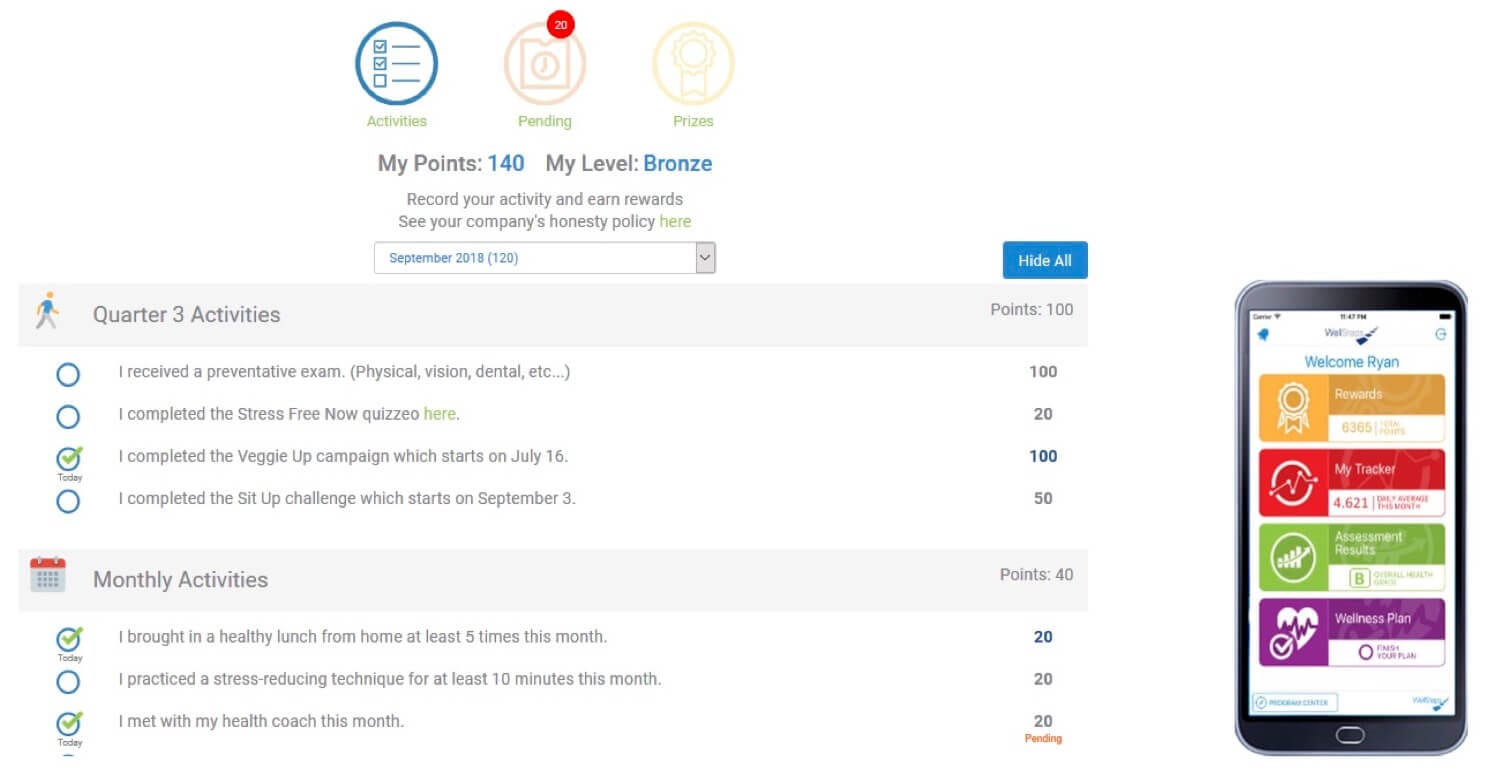All wellness programs are outcomes-based, or at least they should be. But, the phrase outcomes-based wellness program may be confusing. Most employers start a wellness program, in short, to improve employee health, improve employee productivity, or reduce their health care costs.
Since every company with a wellness program is trying to produce one of these outcomes, aren’t they all outcomes-based wellness programs?

When people use the phrase outcomes-based wellness program, what they are really saying is “We want our wellness incentive plan to be based on employees attaining a specific health outcome such as not smoking or attaining certain results on biometric screenings.”
So an outcomes-based wellness program is really not a wellness program at all; it is an incentive strategy. In this sense, outcomes-based wellness programs are, in truth, really just wellness incentive plans used to motivate employees to improve their health.
Goals and Focus of Outcomes-based Wellness Programs
Certainly, the goal of every wellness program should be to help employees adopt and maintain healthy behaviors. In fact, if wellness programs are successful, they will improve employee health and reduce healthcare costs. As you can see in the chart below, a comprehensive wellness program includes way more than just an incentive strategy.
But, incentives or outcomes-based incentive plans are a small part of a much larger wellness strategy. This chart, for example, puts incentives or outcomes-based plans into their proper perspective.

Surely, the purpose of any wellness program should be to improve the health of employees. So, that means the program should be focused on behavior change.
A wellness program that is focused on behavior change will raise an employee’s health awareness, motivate them, provide the tools and skills they need to succeed, and support them with an environment that makes it easier to maintain healthy behaviors for life.
This time-tested model for behavior change includes motivation, an important part of every wellness program. Outcomes-based wellness programs are undoubtedly the basis for much of employee wellness motivation.
The time-tested model for behavior change includes motivation, an important part of every wellness program.
We know an awful lot about how to use incentives to motivate employees to improve their health. In fact, his blog demonstrates how biometric data can be successfully integrated into an incentive strategy.
RELATED: 18 Wellness Program Incentive Ideas From the Best Corporate Wellness Programs
Employers are Scared of Outcomes-based Wellness Programs
With the passage of the Affordable Care Act and subsequent guidelines from various federal agencies, it is unquestionably clear that wellness programs done incorrectly can create trouble with the law.
Recent clarifications, designed to help employers better understand how to integrate incentive strategies into a wellness program, have done nothing but scare employers to the point of immobilization.
Nobody wants to do anything that might get them in trouble with the law, so more companies are suffering from program paralysis by legal analysis. Employers have been scared away from discussing incentives altogether, but this does not have to be the case.
Outcomes-based wellness incentive programs can, however, be a fun and effective part of every wellness program. Yes, there are some basic guidelines, such as be nice to people, use carrots instead of sticks to motivate people, and make participation in your wellness program voluntary.

Once you start forcing people to comply or punishing them because of non-compliance, morale will suffer, health will not improve, and it is very unlikely that healthcare costs will be reduced.
Understanding the Best Way to Implement Outcomes-based Wellness Programs
Here are the basic rules that outcomes-based wellness programs should follow.
- Allow employees to qualify for the reward at least once per year.
- The reward must not exceed 30% (50% if the program is designed to prevent or reduce tobacco use) of the total cost of health care coverage.
- The wellness program, without doubt, must be designed to improve health
- Offer and communicate the availability of a reasonable alternative standard
If you’re in the wellness industry, you probably already understand these rules. But just to make sure everyone is on the same page, WellSteps has hundreds of clients using our wellness incentive programs. And we have never seen a company offer incentives that total up to 30% of the total cost of their healthcare spend.
In general, a typical cost for health insurance is between $5,000 and $6000 per employee per year. So, 30% of this amount is $1,500-$1,800 and represents the maximum amount that can be used as a program incentive. It is extremely rare for a company to pay out more than $1500 as an outcomes-based wellness program incentive.
[video_embed url=”https://vimeo.com/352510277″]
WellSteps Training Video Shows Incentives Best Practices
What has caused problems are the few companies that have tried to penalize employees by more than $1500 because they failed to meet outcomes-based guidelines. In short, this is just not what nice people do!
Besides, an effective wellness program can improve employee health and lower health care costs by offering incentives much lower than 30% of healthcare costs. We’ve seen worksites that use a fraction of that amount and still have some of the nation’s best wellness outcomes.
RELATED: Do Wellness Programs Save Money?
Sample 3 Year Program and Incentive Strategy
Here is an example of a three-year outcomes-based wellness program that are encouraged. They includes activities that are selected by the wellness coordinator and the wellness committee within each company.
Every plan is customized to each particular company. It is extremely important that the wellness committee have input and ideas that are adopted as part of this process so they get a sense of ownership over the incentive strategy.
The Details
| SAMPLE 3-YEAR OUTCOMES-BASED INCENTIVE STRATEGY | |
|---|---|
| Year 1: 100 points needed to earn the incentive complete biometric screening complete personal health assessment (PHA) |
Points 50 50 |
| Year 2: 100 points needed to earn the incentive Have no elevated health risks (BP, CHOL, GLU, BMI, tobacco use) Participate in behavior change campaign #1 Complete in behavior change campaign #2 Complete preventive cancer screening Attend behavior change webinar/presentation #1 Attend behavior change webinar/presentation #2 Go to the gym 4 times a month for 6 month Meet with physician to discuss elevated health risk Track your activity with a wearable device Complete smoking cessation program Complete an approved alternate activity |
Points 70 20 20 20 20 20 20 20 20 50 20 |
| Year 3: 100 points needed to earn the incentive Have no elevated health risks (BP, CHOL, GLU, BMI, tobacco use) Participate in behavior change campaign #1 Engage in behavior change campaign #2 Complete in behavior change campaign #3 Complete preventive cancer screening Attend behavior change webinar/presentation #1 Attend behavior change webinar/presentation #2 Go to the gym 4 times a month for 6 month Meet with physician to discuss elevated health risk Track your activity with a wearable device Complete smoking cessation program Complete an approved alternate activity Attend health coaching Complete Weight Watchers |
Points 70 20 20 20 20 20 20 20 20 20 50 20 40 50 |
The summary
If outcomes-based wellness programs are supposed to be based on biometric outcomes, why doesn’t this three-year plan includes specific biometric outcomes? That is a very good question. But it is the wrong question to ask.
The right questions are, “How do I motivate my employees to adopt and maintain healthy behaviors for the rest of their lives?” and “If I’m going to provide monetary incentives to my employees, what are the best and most important things to incentivize?”
So, what is this?
In reality, this is not an outcomes-based wellness program. Legally, it is a health-contingent wellness incentive program with combined activity-only and outcomes-based objectives.
In other words, it’s a time-tested, effective wellness incentive program that treats employees with respect and helps produce positive wellness results.
It’s a time-tested, effective wellness incentive program that treats employees with respect and helps produce positive wellness results.
It does not punish people who have high LDL cholesterol, who have a higher weight, are hypertensive, or who have high blood glucose. Yet it is still based on biometric data.
Rather than focus on the specific values of each risk, it simply asks the question, “Do you have elevated health risks?” Yes or No. Those who do not have elevated health risks automatically earn 70% of the points they need to earn their wellness incentive. This is exactly what we want from all of our employees.

We want employees to have low health risks and we want to reward them when they do. In an outcomes-based wellness program, if they do have elevated health risks they can still earn the full amount of the incentive, but they have to show some effort by participating in just a few of the many activities that will help them adopt and maintain healthy behaviors.
This incentive strategy is outcomes-based and uses biometric data. But rather than focus on the details of the biometric data, it focuses on helping people do the right kinds of things to get and stay healthy.
By avoiding the details and clinical probing that comes from looking at each specific personal health risk, we avoid many concerns of privacy, data confidentiality, and security.
Done correctly, the employer will never see any employee’s biometric data, only a “yes” or “no” regarding a cluster of health risks.
RELATED: How to do Biometric Screening: The Complete Guide
Simpler is Always Better
Outcomes-based wellness programs include many activities that can be easily verify using today’s technology. Using our WellSteps Rewards platform, employers can easily verify who has completed a biometric screening and who has watched or participated in a presentation.
They can also automatically track which employees have completed a behavior change campaign, who is using a wearable device to monitor physical activity, and report a range of other activities using electronic data.
This three-year example of an outcomes-based wellness program is a copy of the actual rewards activities that many of our clients currently use.
Employees participate with ease because most of the activities are automatically verified and they can use the WellSteps rewards platform and the WellSteps app to easily report or upload their data.
The best incentive strategies work when they don’t probe into personal data and make it really easy for employees to report and monitor their progress.

Employers sometimes ask employees to provide additional verification that they have completed certain activities. To make this process simple, the WellSteps app allows employees to take a picture of the verification and have it automatically uploaded to their account.
RELATED: 10 Effective Ways to Motivate Employees in the Workplace
Next Steps for Your Outcome-based Wellness Program
If the wellness goal is to improve employee health and bend the medical cost trend, employee behavior must change. Outcomes-based wellness programs or incentive strategies will increase program participation and effectiveness.
A combination of biometric data and health promoting activities can encourage health behaviors while giving employees lots of different ways to qualify. If you treat people with respect and don’t force them to participate, your employees will love your outcomes-based wellness program and employee morale will get a big boost.
To see how a customized wellness program will benefit your company and employees in this way, enjoy a free demo with the WellSteps team and discover exactly how.

Frequently Asked Questions
What are incentive based wellness programs?
The goal of the wellness program is to help employees adopt and maintain healthy behaviors. Ideally, employees stay internally motivated to be healthy. However, when employees get stuck in unhealthy habits, they often need help to adopt and maintain healthy behaviors.
The best way to do this is to provide small incentives, such as gift cards, to randomly selected employees who successfully complete different aspects of the wellness program. We have great published scientific evidence that this incentive approach works. It is the incentive approach that WellSteps recommends to all of our clients.
What are the different types of wellness programs?
Most health and wellness programs offer a comprehensive suite of wellness options and activities. But there are a few wellness companies that don’t offer all these services. They may offer just corporate nutrition programs, campaigns, portals, incentives, massages, stress management, or just offer wellness management services.
Not every wellness company has comprehensive solutions. For example, a lot of companies offer just corporate fitness activities. You can find a massive blog called 57 Wellness Solutions: The Complete List of Workplace Wellness Programs which describes every existing wellness program that claims to offer comprehensive services.